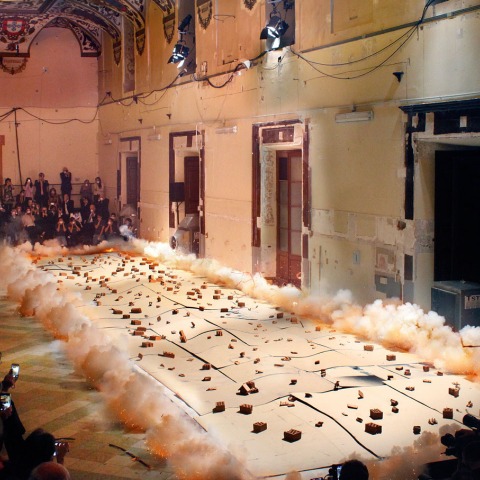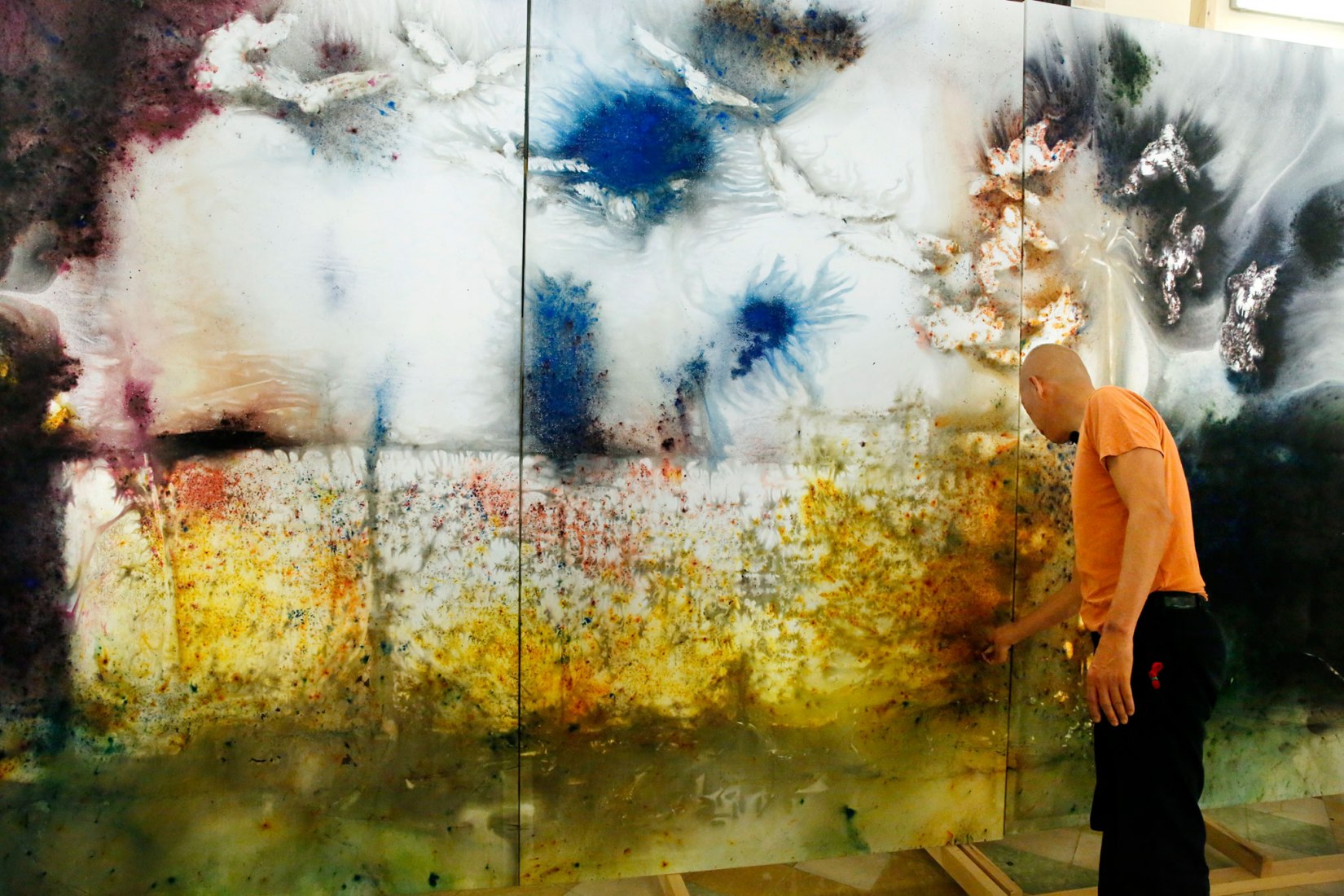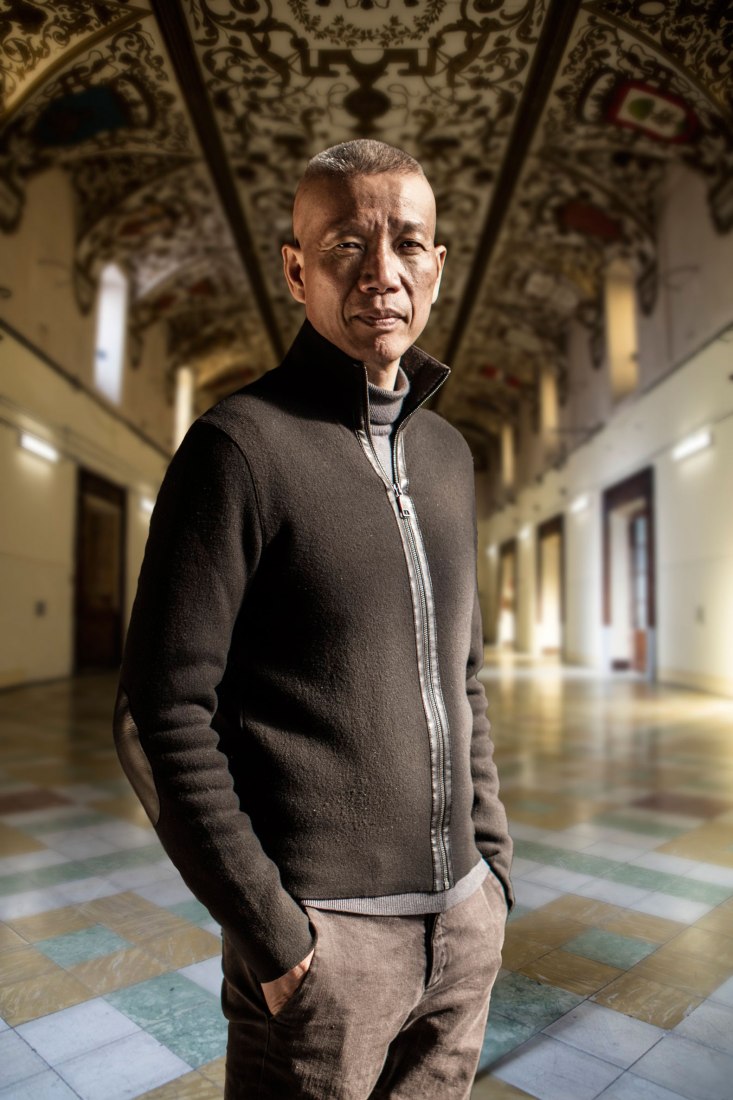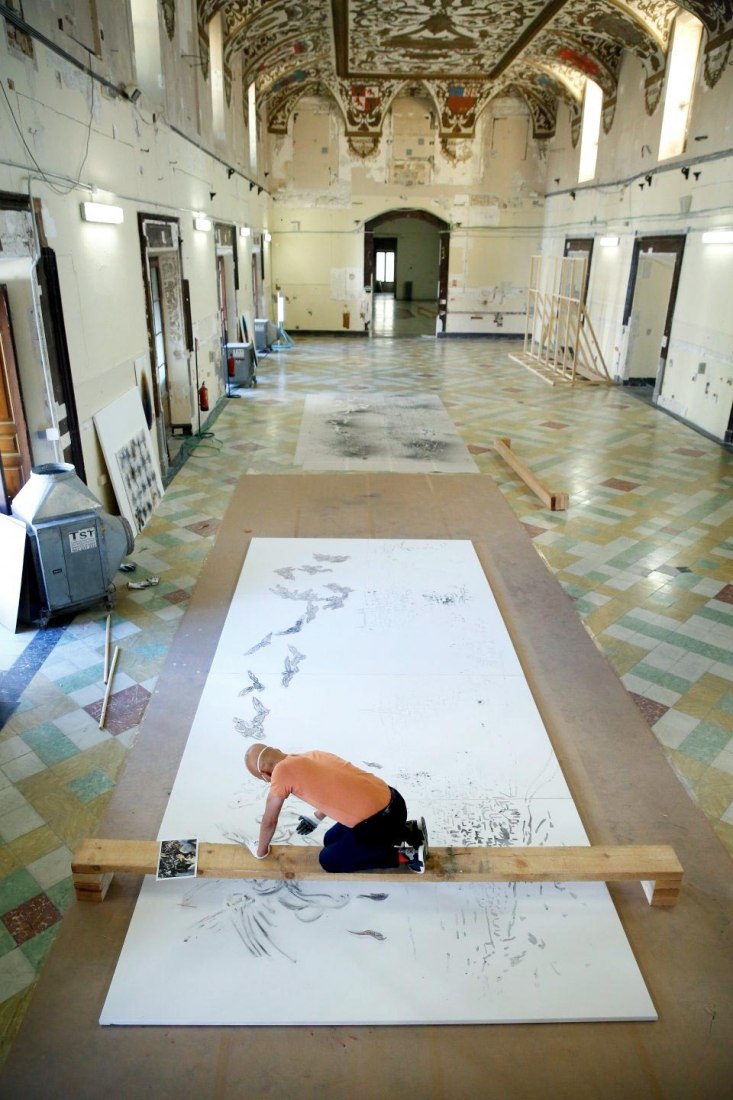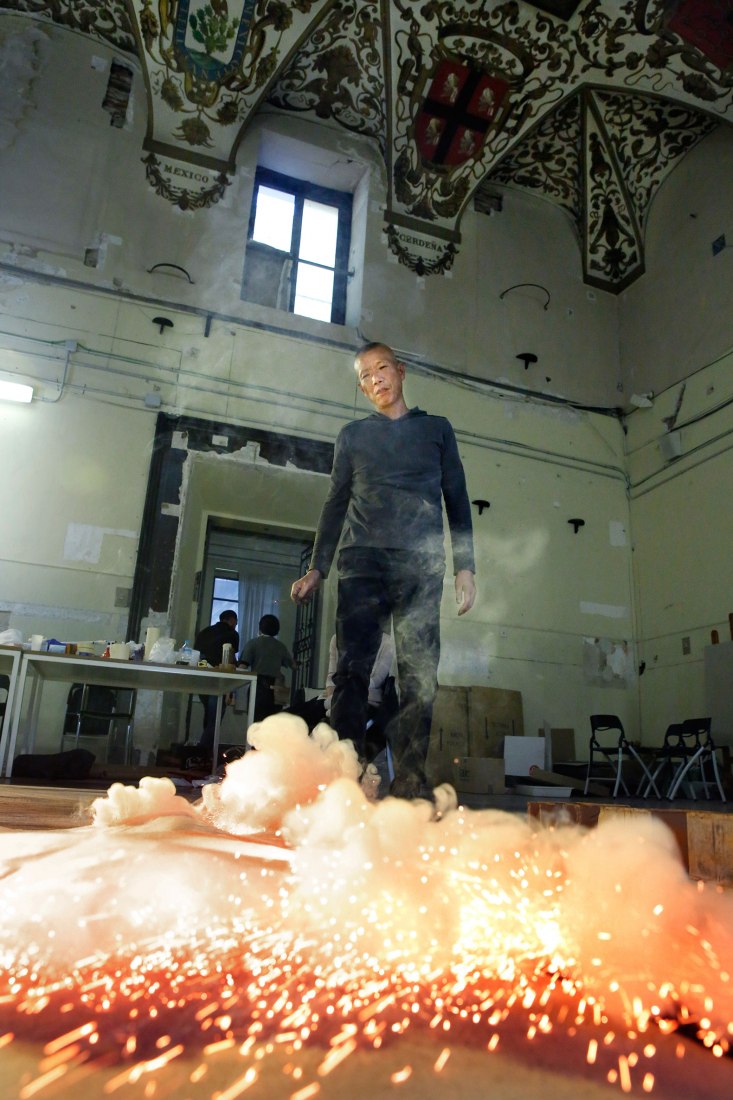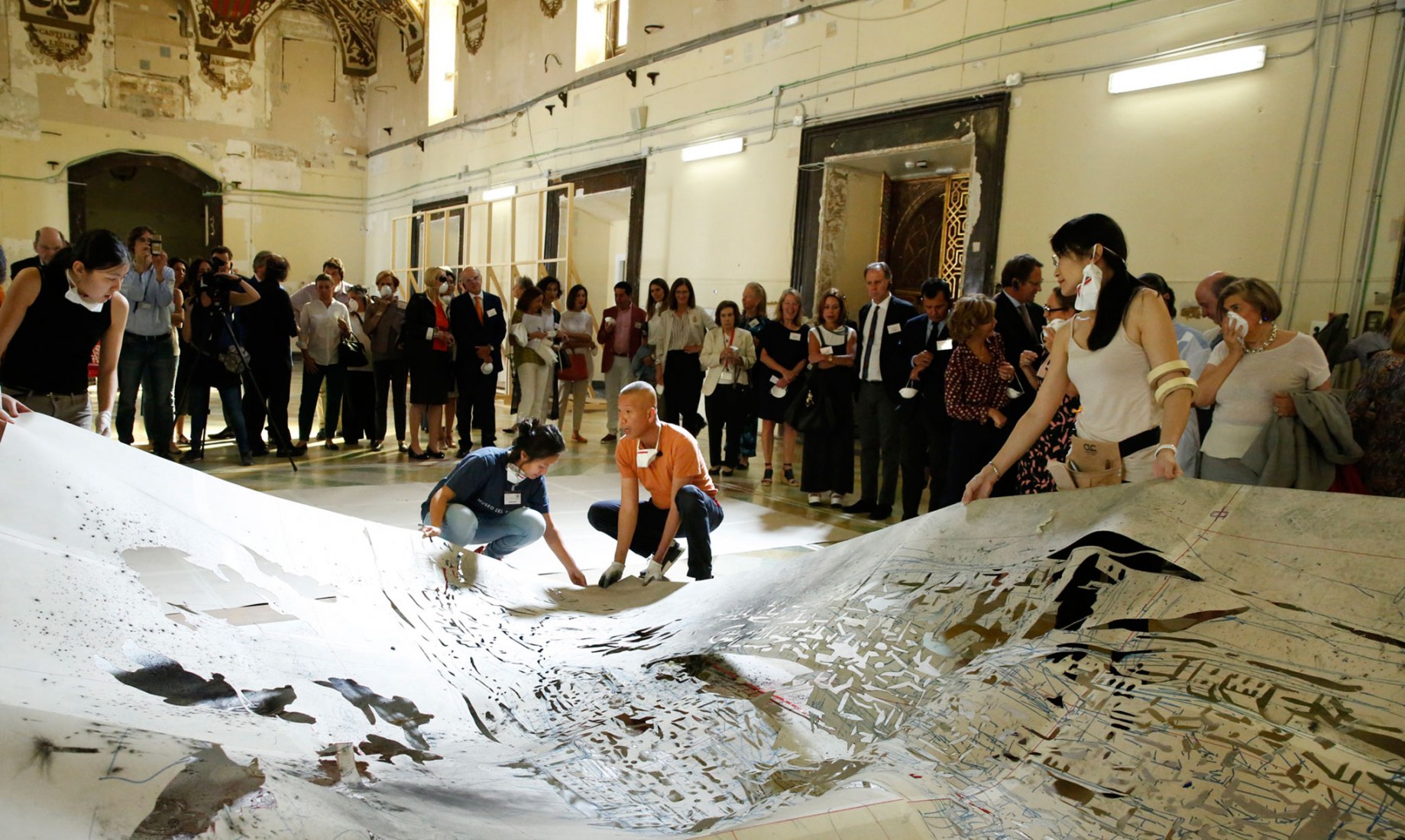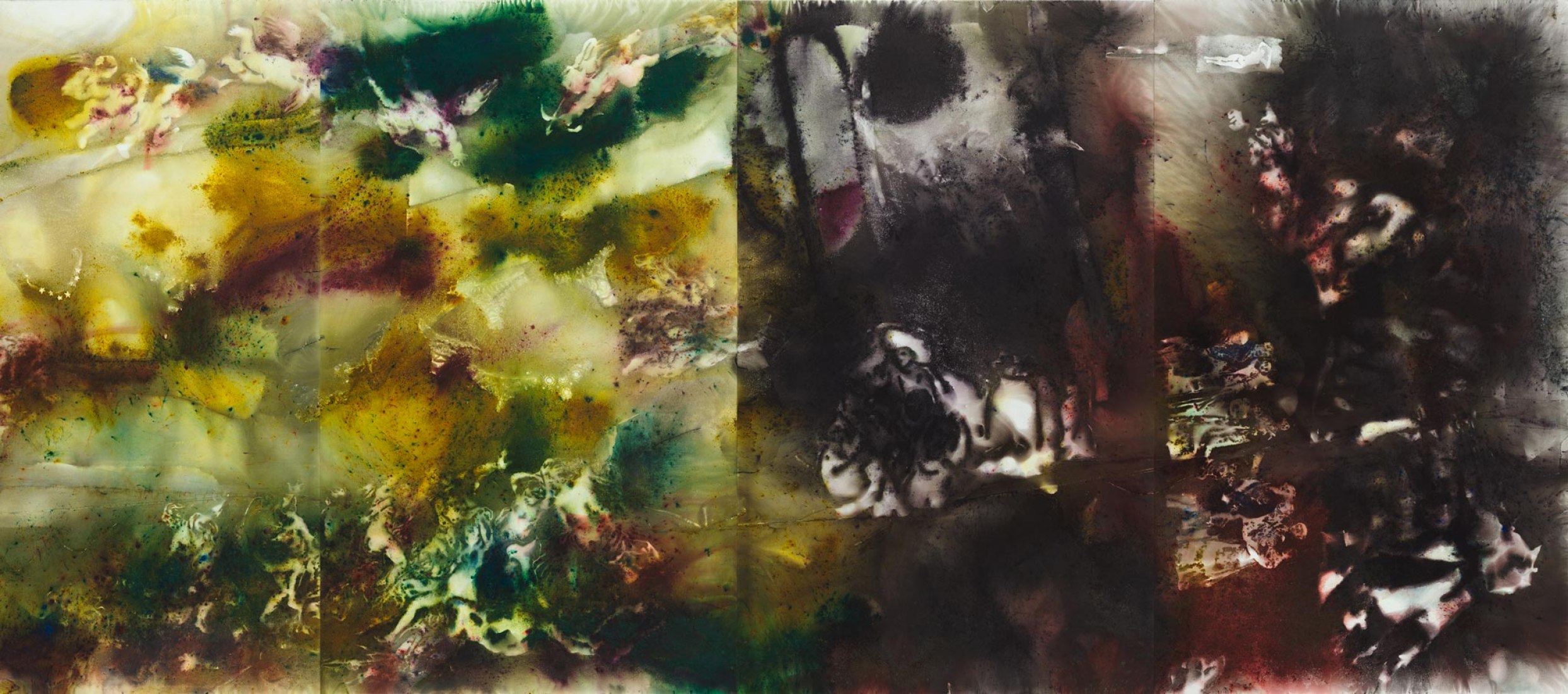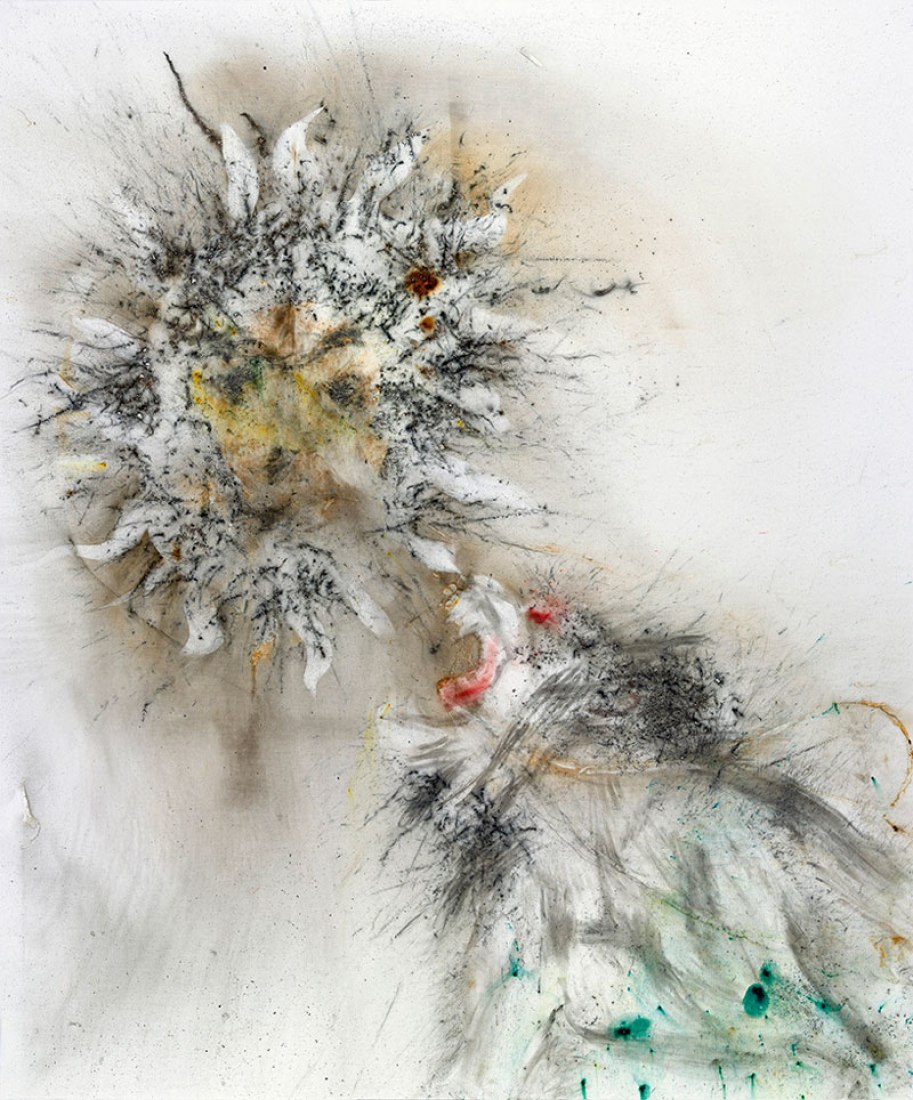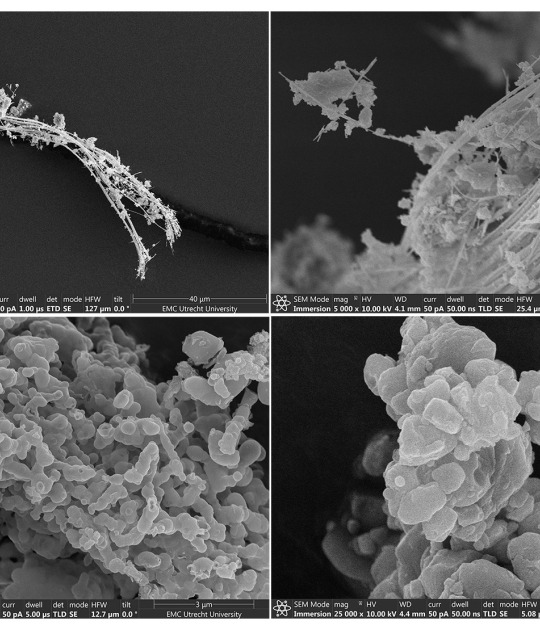Cai Guo-Qiang is the first contemporary artist to create on-site at the Prado. This is his first solo exhibition solely focused on painting in over 30 years.
Cai Guo-Qiang (born Quanzhou, Fujian Province, China, 1957) began in late September this year, creating the majority of paintings on-site in the historic Salón de Reinos (Hall of Realms).
Over 400 years ago, Rey Planeta (King of the Planet) Philip IV received envoys from every realm in this formidable venue. He commissioned the most eminent painters in Spain and Europe, including Velazquez, to create paintings for the Salón de Reinos, engaging these masters in fierce artistic competition.
The Hall was later transformed into a military museum. For Cai Guo-Qiang, creating gunpowder paintings in the Salón de Reinos becomes a site-specific event, one that travels through time, revisiting shadows of the distant past and challenging the imagination and creativity of the present day. At dusk on October 23, Cai Guo-Qiang exploded the immense artwork The Spirit of Painting, which now is the centerpiece of the exhibition, from October 25th until March 1, 2018.
This exhibition comprises nearly 30 paintings made with gunpowder; eight of them ignited on-site at the Salón de Reinos. Also on view are an oil and an acrylic created at the start of his activities as a painter; and various sketches and drawings on matchboxes by his father, Cai Ruiqin, who steered him towards painting.
Documentary by Isabel Coixet (look video below)
Room D will be showing a 20-minute documentary. The exceptional nature of this exhibition will be accompanied by the gaze of filmmaker Isabel Coixet, one of Spain’s most internationally acclaimed directors. She will be offering a portrait of the artist’s creative process and his production of the works to be displayed in the Museum’s Jerónimos Building.
Filming will take place in New York where Cai Guo-Qiang lives and has his studio, on Long Island and in Madrid during his residency in the Hall of Realms, as well as in Valencia and Toledo.
The documentary, filmed in 4K, will introduce visitors to the exhibition to Cai Guo-Qiang’s creative process through the personal gaze of one of Spain’s most internationally acclaimed directors.
